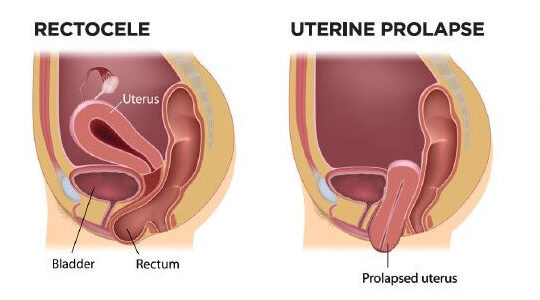Pelvic Floor Physical Therapy for Constipation in New York City
What are the Signs & Symptoms?
Types of Constipation
Constipation & the Pelvic Floor
How Pelvic Floor Physical Therapy Helps
What you can do
What is Constipation?
Constipation tends to mean different things to different people as not everyone has a daily bowel movement. Generally constipation refers to having too few bowel movements passing per week. What’s referred to as “normal or regular” bowel habits typically varies from 1-3 times per day to 1 every 3 days. Chances are you have a sense of what is regular for you- – and therefore what is also not normal for you.
Beyond the frequency of bowel movements, normal stool should be soft, well-formed and easy to pass without straining. Constipation can also be characterized as having hard and dry stool that is difficult to pass, a reduction in the size of the stool, and or having to strain to have a bowel movement. Some people describe constipation as having a feeling of not emptying their bowel completely and needing enemas, suppositories or laxatives to have a healthy and proper bowel movement.
From a more clinical perspective of how your stool measures, something called the “Bristol Stool Chart” serves as a diagnostic tool to evaluate profiles of stool based on consistency and shape of the stool. If you are experiencing constipation, it’s likely your stool reflects Type 1 or Type 2 on the below chart – whereas ideal stool is more like Type 3 or Type 4. Stool that contains excess liquid or is entirely liquid indicates diarrhea (Types 5, 6, and 7).
- Type 1: Separate hard lumps (hard to pass)
- Type 2: Lumpy, sausage-shaped
- Type 3: Sausage-shaped with cracks on the surface
- Type 4: Sausage-shaped or snake-like; smooth and soft
- Type 5: Blobs that are soft with clear-cut edges making it easy to pass
- Type 6: Fluffy pieces with ragged edges; mushy
- Type 7: Entirely liquid, watery, no solid pieces

What are the Signs and Symptoms of Constipation?
Symptoms may include:
- Excessive straining to have a bowel movement
- Feeling of incomplete emptying after a bowel movement
- Abdominal bloating
- Passing small amounts of stool
Common symptoms of constipation include infrequent bowel movements, a decreased amount of stool, straining, hard stools, and the sensation of incomplete emptying of fecal matter with bowel movements. Some people report that they are able to pass only a little stool at a time and thus require multiple trips to the toilet. And as stated previously, in order to maintain regular bowel movements some people even feel the need to use suppositories or laxatives.
What are the Types of Constipation?
Without getting too clinical here in language, there are essentially two different types of constipation, general constipation and outlet constipation – both of which can negatively impact your pelvic floor.
General constipation occurs when the muscles of the large intestine (the colon) have problems with something called peristalsis, which are waves of muscle contractions that move waste out of the body in the form of stool. This results in the waste moving very slowly if at all. Numerous factors can contribute to general constipation, some simultaneously, including:
- Limited fiber & fluid intake
- An imbalanced diet with excessive animal fat or sugar
- Excessive sitting and minimal physical exercise including how some people have difficulty coordinating their pelvic floor muscles
- Medications taken for other issues
- A sluggishly functioning colon (perhaps due to aging or irritable bowel syndrome related)
- Hormonal changes related menstruation or pregnancy
- Dehydration as when the body has insufficient water, it will reabsorb water from the colon, consequently making the stool hard and difficult to pass.
Outlet constipation is experienced when stool in the rectum seems stuck, unable to properly exit, generally due to dysfunction of the pelvic floor. If the rectum’s supporting pelvic floor muscles are excessively tight and not able to relax, it would cause difficulty passing stool and having a bowel movement. This commonly leads to straining in effort to have a bowel movement which then causes the pelvic floor muscles to tighten further. Therefore, the more straining and pushing, the tighter the muscles become, increasing the difficulty of successfully completing a bowel movement.
Constipation and the Pelvic Floor
Constipation is one of the most common gastrointestinal complaints and it affects nearly everyone at some point in their lives. The Mayo Clinic has reported that half of patients with chronic constipation also have pelvic floor dysfunction (impaired relaxation and coordination of pelvic floor and abdominal muscles during evacuation). Upon ruling out mechanical, anatomic, diet and disease related causes for a person’s constipation, clinical attention should be directed to the pelvic floor for what is called “pelvic floor dysfunction”.

Picture the pelvic floor as a muscular bowl that encompasses the bladder, rectum, bladder, and uterus (for women). In having a bowel movement the abdominal (stomach) muscles need to contract and the group of muscles at the end of the rectum (called the anal sphincter) have to relax.
The pelvic floor is a group of muscles that must relax and contract properly to maintain urinary and fecal continence, sexual function, and bowel functions. More precisely, pelvic floor muscle strength is essential for both full bladder control and healthy bowel movement. Chronic straining from constipation can lead to weakening and tightening of the pelvic floor muscles, place excessive stress on pelvic organs and nerves, as well as cause bladder dysfunction and recurring accidental bowel leakage (fecal incontinence). Pelvic floor dysfunction in constipation is characterized by a reduced coordination between the pelvic floor muscles and abdominal wall motion, which is necessary for normal bowel movements. Pelvic floor muscles unable to relax and contract can commonly lead to constipation, which is referred to as dyssynergic defecation or anismus.
How Pelvic Floor Physical Therapy Helps
Pelvic floor muscles play an essential role in bowel function. For example, the puborectalis is muscle wrapped around the rectum and needs to be sufficiently relaxed to enable stool to pass yet also sustain enough tension to fully manage the rectum during a bowel movement.

When the puborectalis is pulled tighter around the rectum it securely grips the passageway and helps us keep fecal matter in. Conversely, when we do want or need to have a bowel movement, the puborectalis muscle needs to be able to relax and lengthen so that the rectum can become an easy passageway of a healthy bowel movement. Hence excessively tight and or overly lax pelvic floor muscles are dysfunctional muscles and can wreak havoc on healthy bowel control leading to constipation.
Pelvic floor physical therapy applies manual techniques, specific exercises, nutrition counseling, and education to help resolve constipation. With pelvic floor dyssynergia (pelvic dyssynergia), the muscles in your pelvic floor become uncoordinated and are contracting and closing the rectum rather than relaxing and opening the sphincter when you attempt to have a bowel movement.
What you can do
Our bowels are generally inactive when we’re asleep, which is why it’s sensible to take our time in the mornings. After waking, it takes time for our bowels to become active and allow time for the body’s natural emptying reflex to unfold. This usually in the morning when a reflex occurs approximately a half-hour after drinking a hot beverage or eating a meal and starts the body’s mechanism to automatically move stool. Coupling this with a mild-moderate physical activity, such as a morning walk can also be helpful.

In effort for your pelvic floor muscles to completely relax, your sitting position on a toilet can enhance achieving a healthy bowel movement. Using a foot stool as in the diagram above is helpful and important so your knees are positioned higher than your hips. A slight forward lean while placing your elbows on your knees is also helpful. Focus on the relaxation of your pelvic floor muscles while emptying your bowels.
- Position your knees higher than your hips.
- A slight forward lean placing your elbows on your knees.
- Bulge out your abdomen, as you exhale.
- While relaxing your anus, using your abdominal muscles gently push the stool out of the open sphincter
If you’ve been coping with constipation having your pelvic floor evaluated is sensible, because a diagnosis of pelvic floor dysfunction is entirely treatable and without the use of drugs. When helping a patient experiencing constipation, I conduct a comprehensive evaluation to identify the root musculoskeletal and neuromuscular causes of the patient’s constipation. I will then develop an individualized treatment plan that may include: internal and external manual therapy such as biofeedback, nerve gliding/tension release, myofascial release, and visceral manipulation.
The goal of pelvic floor physical therapy for constipation is to develop your ability to completely relax your pelvic floor while simultaneously allowing gentle propulsive forces from deep abdominal muscles to enable you to experience a healthy bowel movement free of constipation. Patients also receive instruction in correct bowel movement techniques to prevent straining, as well as therapeutic and core-strengthening exercises. Managing diet, getting regular exercise, and reducing stress are also key pillars in dealing with constipation.
The information provided is educational, not medical advice. If you are someone dealing with constipation issues and want to learn how pelvic floor physical therapy can be helpful and or explore your treatment options, please consider contacting me, Dr. Helen Kim, for a complimentary phone consultation.
Reach me if I can answer any questions on physical therapy, serving you locally in New York City or anywhere online virtually through “telehealth“.
Sign up for Pelvic Health and Wellness Tips






